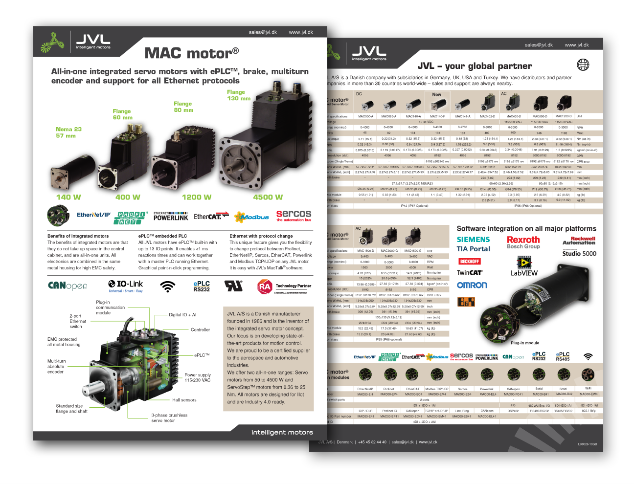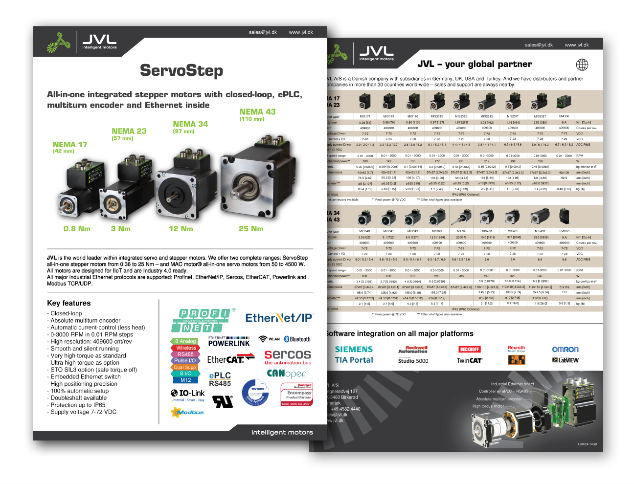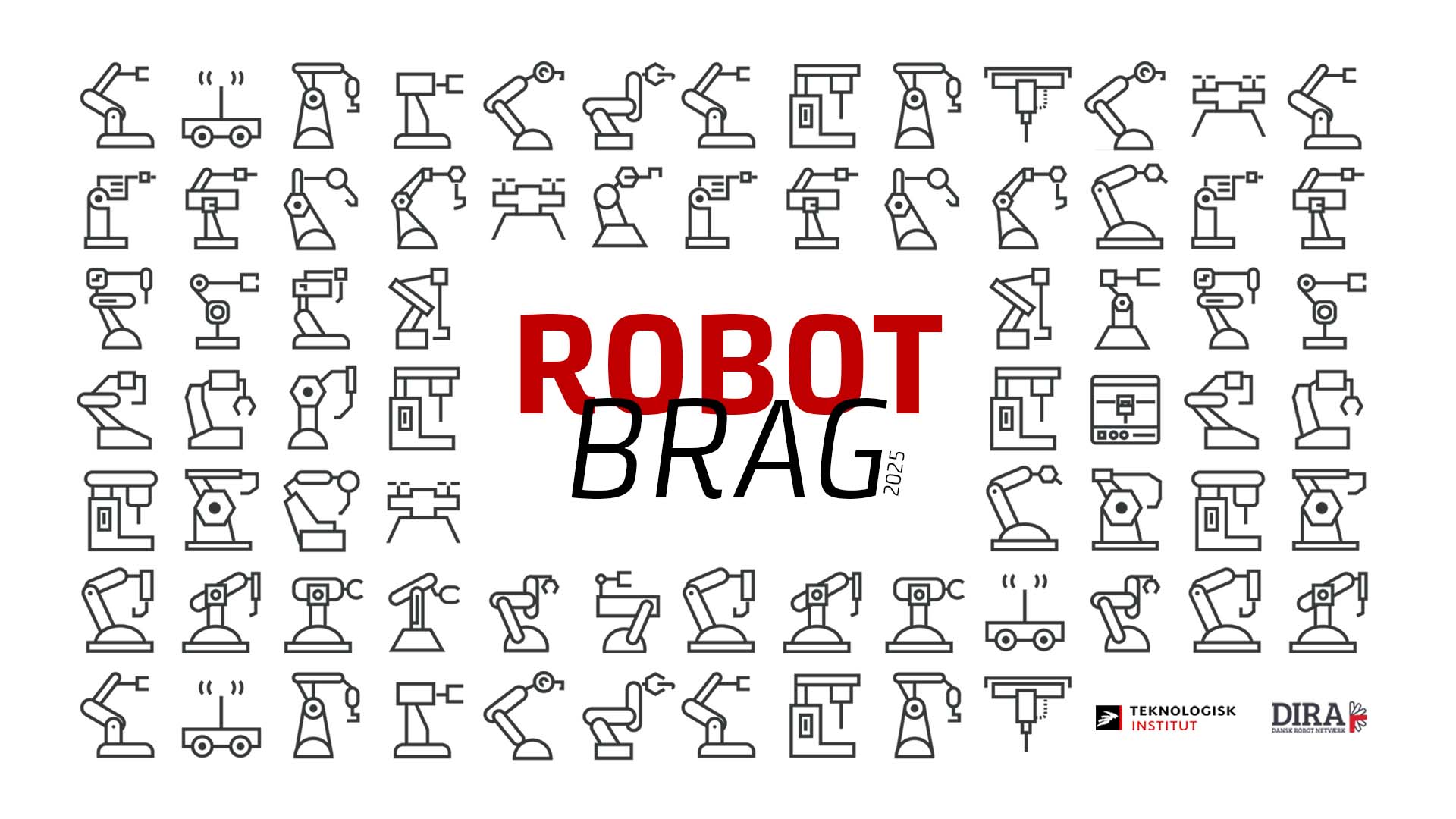
B&O Assembles Loudspeakers using a Robot Screwdriver controlled by JVL AC-Servo Controllers
|
Loudspeaker cabinets and driver units assembled with the help of an advanced, specially-designed robot.
As part of the continued development in production automation, the world-renowned Danish hi-fi manufacturer Bang & Olufsen introduced a new, specially designed robot screwdriver in the spring of 1997. The robot is currently being used for assembly of cabinets for B&O's popular mini-loudspeakers, BeoLab 4000, but has been configured for assembly of 3 different types of loudspeaker. The robot has been designed and constructed by B&O's own production engineering department, which has produced a very compact and extremely reliable unit that provides exactly the right solution to B&O's needs. The robot moves an automatic screwdriver using x-y co-ordinates in the horizontal plane and z co-ordinates in the vertical plane. In addition, it can be angled to the vertical plane in the x-direction using a co-ordinate designated x2. All four directional movements are driven by JVL AMC11B Servo Controllers and associated Yaskawa AC servo motors. Rotation of the screwdriver head itself is driven by a JVL AMC Servo Controller AMC12B which is partly operated in torque mode to ensure the correct tightening of the individual screws. The robot can also turn the screwdriver unit 90° using a pneumatic cylinder, so that the unit can be angled in the y-axix (y2). It is additionally prepared for configuration with a further servo-controller so that the unit can be angled in any required direction. All of the JVL drivers are controlled by a Systec MCM-Step controller which is supplied in Denmark by JVL. The Systec unit executes a program developed by B&O. Using pulse and direction signals, this program tells each individual controller what to do and when. The Systec controller itself is controlled together with other robot functions by a Siemens S7 PLC, partly via an ASI-bus. Mounting of screws in the robot unit and other functions are controlled pneumatically.
The screws must be driven through three different types of material, each of which requires a different torque. Screwdriver rotation is therefore controlled in such a way that the first rotations occur at full torque, after which the motor is current controlled. The applied torque is thus correct for each material at each stage of the process. Assembly of the cabinets currently being produced by the robot requires three torque values but the robot is programmed to handle up to 16 different values of torque. The loudspeaker sets are mounted accurately (within ½ mm) on an assembly palette and a total of 28 screws are mounted in each set. The total assembly time, including transport of the assembly palette in and out of the machine is 90 seconds. The robot can in fact operate faster but B&O have opted to use a lower speed to prolong the machine's lifetime and ensure a very low error rate. Each palette is equipped with a bar code which tells the robot precisely which type of loudspeaker is to be assembled and also enables a check to be made to ensure that the palette has not already been assembled. Moreover the robot is connected to the subsequent test unit. This unit carries out a performance check of the loudspeaker andis thus notified if any screws have not been correctly tightened. The entire robot construction has been implemented to comply with the EMC directive. Screened cable is used throughout the construction and all Sub-D connectors are equipped with built-in noise filters. B&O designers have gained considerable experience throughout the design and construction of the robot screwdriver and have been very satisfied with the co-operation with JVL engineers. For our part, we have been extremely pleased to take part in this exciting project and take some degree of pride in the fact that the installation has now been in operation without any faults for more than six months.
|
|
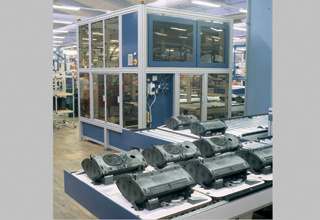 Robot screwdriver at Bang & Olufsen.
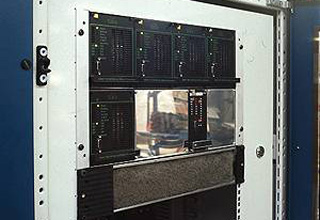 JVL and Systec Controllers mounted in a 19" rack in the control station.
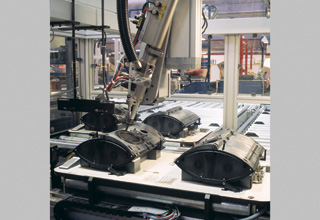 Robot screwdriver assembling loudspeaker cabinets.
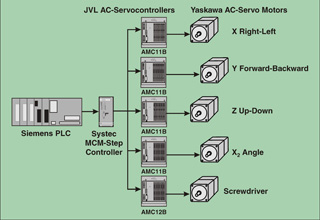 Schematic overview of the control system. |
JVL A/S Bregnerødvej 127 DK-3460 Birkerød Denmark
Tel: +45 4582 4440 Fax: +45 4582 5550 E-mail: jvl@jvl.dk
Tel: +45 4582 4440 Fax: +45 4582 5550 E-mail: jvl@jvl.dk




